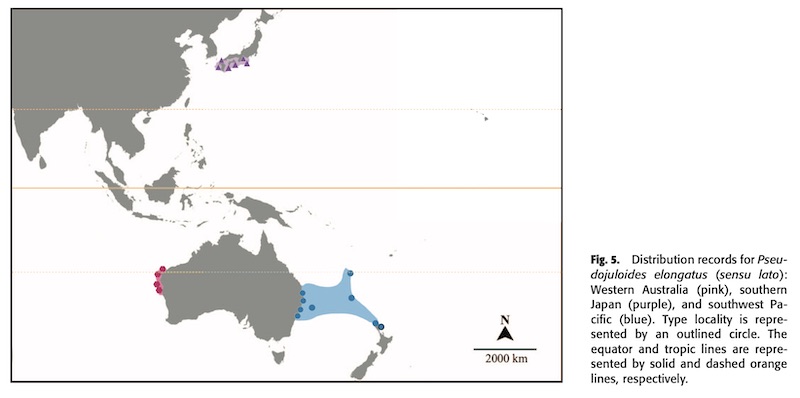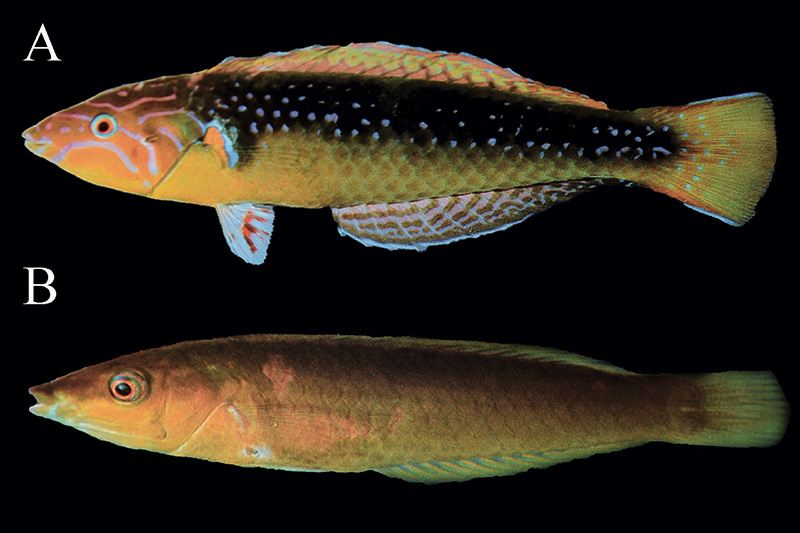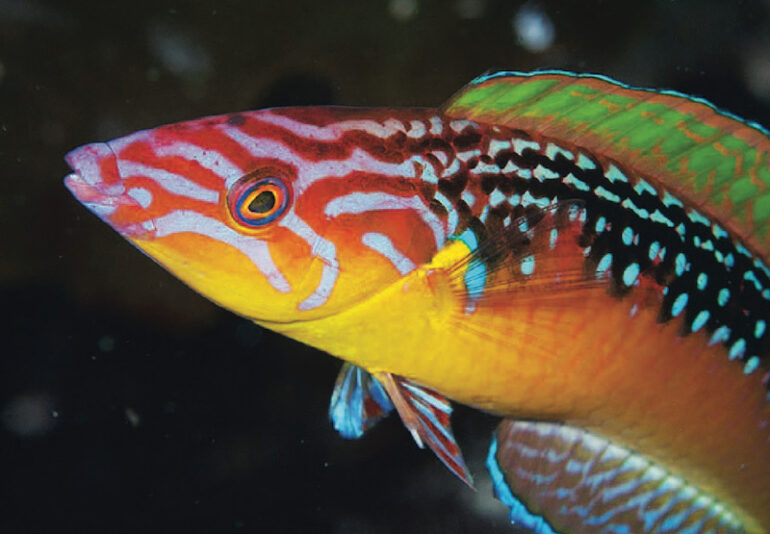Pseudojuloides crux and P. paradiseus are two new species of pencil wrasses described by Reef Builders alum Yi-Kai Tea et. al that sheds light on some ‘known unknown’ labrid species. In a similar vein to the Roa rumsfeldi butterflyfish, the new pencil wrasse species are the result of closer inspection of the different populations of elongate pencil wrasses, P. elongatus.

Previously, the elongate pencil wrasse was recognized from three widely separated, ‘anti-equatorial’ population ranges in southern Japan, western Australia, and Eastern Australia. Following the redescription of Pseudojuloides elongatus, this species is now limited to Eastern Australia, P. crux takes over the classification of the West Australian species, and P. paradiseus is the name given to the pencil wrasse of Southern Japan.

As mentioned above, Pseudojuloides crux is now considered endemic to Western Australia with a coloration very similar to P. elongatus but males that are greenish yellow to yellowish orange but a much more pronounced dark patch overlaying the upper half of the body. This dark regions highlights three to five rows of bright metallic blue spots in the males, while females are mostly unadorned and drab by comparison.

If the stellate pencil wrasse P. crux is a slightly more colorful and attractive version of the elongate pencil wrasse, the paradise pencil wrasse P. paradiseus really turns up the light show. This newly recognized species from Southern Japan has been the subject of many Japanese underwater photographers and has even made some rare appearances in marine aquariums as Pseudojuloides sp. 4.
The paradise pencil wrasse is orange overall, especially the females which basically look like an agile swimming carrot totally devoid of any pattern. The males of Pseudojuloides paradiseus are orange overall with a yellow ventral area, and the black patch of its congeners limited to part of the upper body.
The face and body of male paradise pencil wrasses are incredibly adorned throughout with metallic blue spangling across the body, blue lines across the face, a ring of green spots dappled through the dorsal fin and red spots in the mostly blue pelvic fins. Needless to say, paradise pencil wrasse really lives up to the coloration found in mature males of many other pencil wrasses from across the world.
Thankfully, these beautiful new pencil wrasse species are perfect size for aquariums, growing up to around 4 inches or 10 cm long, and are found in relatively shallow waters. Hopefully with the official description of the formerly wide-ranging elongate pencil wrasses into three separate species will help us understand these beautiful fish and what makes them distinctive and unique. [Copeia]



